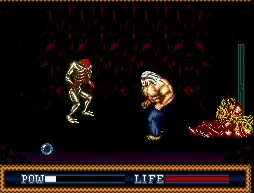There were few custom ICs added to MD Cartridges with Virtua Racer being the one with the most advanced IC on-board. However, Street Fighter II had a special memory-mapper that swapped pages into memory space - I know this as I recall the tests we did on UMDK around 2015 or so.
I don't consider the use of extra chips or what not as it making it 'not a MD title'. That it runs on the MD is the main factor for me. But you have to consider what you'd add and a lot of that rests on the the type of game you wish to make: does it require lots of calculation of geometry, etc.?
You then have to consider cost in terms of components and in terms of how much the entire cart's components require power - there's an upper limit.
It's a MD title in my book in any case.
It is true we do have better tools by far these days, but we are lacking people who have low-level development skills too.
One of the best ways to get insight is to reverse a commercial MD ROM and work out how the pros did it.
This is indeed how NG:Dev's hardware for the NeoGeo does its thing. Having a cheap (in terms of monetary cost and power-consumption) ARM uC is most certainly feasible but again it boils down to what your intentions are. An ARM could easily decompress a lot faster than the 68K. If you needed to do any multiplication or division again the 68K is expensive to do so using the MUL and DIV opcodes which is why most people use logical shifts left and right for multiplication and division for the 68K.One scenerio is an ARM processor. The ARM would feed instructions (and a ton of no ops to the MD hardware registers). The ARM would "race" the Mega Drive. Because the ARM runs faster than the Mega Drive, the slack time (between sending updates to the Mega Drive and during no-ops) would be available for logic. Additionally, the game's state would "live" on the ARM cart. That allows a large share of the game to be written in C++. That makes development (writing, debugging, and iterating) significantly easier.










 Total invincibility, too.
Total invincibility, too.